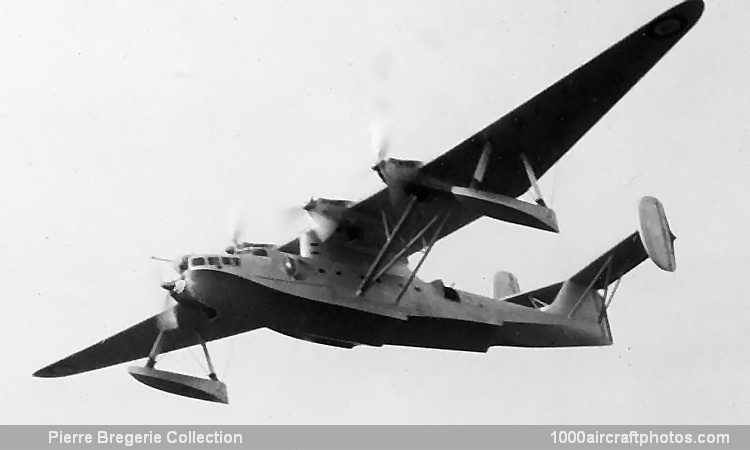12/31/2010. Remarks by Johan Visschedijk: "The Potez-CAMS 141 was designed to meet a French Admiralty specification issued on May 10, 1935, and calling for a Long-range Maritime Reconnaissance Flying Boat to supplant the Bizerte and other types approaching obsolescence. Detailed design and construction was begun by the CAMS (Chantiers Aero-Maritimes de la Seine) during the second half of 1936, and the prototype, which had been built at Sartrouville and shipped to Caudebec-en-Caux for assembly, flew for the first time on January 21, 1938.
After some twenty hours of flying, the bow side keels were raised to improve hydrodynamic performance at maximum loads, and in August 1938, the Potez-CAMS 141 was flown to St. Raphaël for official trials. After thirty-three hours flight testing at Saint Raphaël, the 930 hp Hispano-Suiza 12Y-26/27 liquid-cooled V-engines using 87 octane fuel were replaced by 970 hp Hispano-Suiza 12Y-36/37 engines using 100 octane fuel, but almost immediately the original engines were re-installed.
The Potez-CAMS 141 was, like the other flying boats built to the same specification, intended to mount a 0.98 (25 mm) cannon in the dorsal turret, although this weapon was never installed. In the spring of 1939, the prototype was christened Antarès by the French Navy, and a production order was placed for four machines, this being augmented by an additional order for a further fifteen machines shortly before the beginning of WW II.
Production of the hulls began at Le Havre, the wings being built at Meaulte. Shortly after hostilities began, unlimited production of the Potez-CAMS 141 was ordered, a delivery rate of two machines per month being scheduled to commence in June 1940. However, on April 27, 1940, as a result of the low loss-rate of long-range flying boats, the French Admiralty requested that production be limited to 31 machines and, in the following month, reduced this to eleven machines.
The original prototype Antarès had been delivered to a new unit, Escadrille E8, forming its only flying equipment, and on November 20, 1939, it was decided to install two 0.295 in (7.5 mm) Dame machine guns (similar to that used by French motor torpedo boats) in each of the power-operated dorsal turret, the lateral barbettes, and the waist positions. An additional 3,307 lb (1,500 kg) bomb load could be carried.
Operated by nine to twelve crewmembers the Antarès flew long-range patrols over the Atlantic until June 18, 1940. It was subsequently flown to Port Lyautey where it was delivered to Escadrille E8, being passed to Escadrille 6E on August 1, 1940, and to Escadrille 4E at Dakar on September 7, 1940. From November 1942, the Antarès resumed patrols over the Central and South Atlantic, and on June 2, 1943, sank a German submarine, U-105, some 35 mls (56 km) from Dakar.
The aircraft was finally scrapped late in 1943 by which time it had logged 1,800 flying hours. No production Potez-CAMS 141 flying boats were completed."
